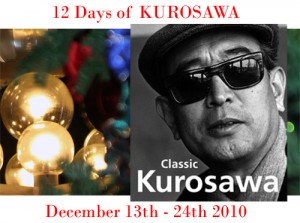
Hello World, Marc Here:
From my family to yours I’d like to wish a very Merry Christmas to all you G-S-T fans!! And for those of you keeping up with our “12 Days of Kurosawa” I’ll say メリークリスマス!!
It’s been a wonderful 12 days and I have to say that I now understand the wild popularity behind legendary filmmaker Akira Kurosawa. A master of visual storytelling, what really stands out in each film is the subtlety to cinematography, specifically the way each scene is set up. So, as I now have newly minted respect and admiration for his work, here is a very brief review of the films in my series…
Probably not the best Kurosawa film to start off with, I admit I did struggle with this one. Having only ever seen Seven Samurai I don’t think I was ready for this as it was a very artful film that bordered on documentary. Knowing nothing of the history I got a little lost in it all. Very interesting was this story of a petty thief who serves as a double for the general for three years after his own death; talk about preserving your image. Slow for my taste but I don’t mind as long as there was a point to it all or a satisfying resolution. Sadly I found neither…a second viewing perhaps will help me appreciate things I wasn’t looking for. I’ve read that the Criterion commentary helps a lot and I bet would help me appreciate it better. But I’m in no hurry.
I have to say up front that Toshiro Mifune is just one hell of an actor. Not the world’s greatest but uber talented and rock solid performances from start to finish. He makes each scene more fun and makes his acting look effortless and that’s the sign of a good actor. Honestly I wish I could understand Japanese as I feel that reading the subs doesn’t allow me time to take in his inflections and mannerisms enough from scene to scene. But in this retelling of Macbeth his ‘Washizu’ is just mesmerizing as his quest to expand his empire he betrays his old friend Miki. Certainly more entertaining than reading Shakespeare in 10th grade English that’s for sure…and what an ending!
Now I’d like to say I was hesitant about ‘80s Kurosawa after seeing Kagemusha. But as this is a retelling of another Shakespeare classic (this time King Lear) my great time watching Throne of Blood told me this viewing would bode well. Kurosawa makes for such great use of action, unbelievably epic set pieces, and visuals so grand my eyes succeeded in popping. I had a hard time following the story because I kept focusing on the gorgeous color pallets. Again, lots better than I expected and I can’t believe Kurosawa made this at 75. Lots better than Kagemusha that’s for sure and to that I say Domo Arrigato Mr. Kurosawa…
Getting away from 16th century feudal Japan and the abundance of Ronin, Kurosawa take us to pre-WWII Japan. Now this was time in history I greatly like and never hearing of Tatsuo Matsumura I quickly became a fan. After his 30 years teaching his sights turn to writing. But if having your house bombed during the war make you want to throw in the towel Professor Hyakken Uchida tells us he’s not done by a long shot. Touching, tender and a pick me up kind of movie…but that’s what I think.
In what began like Kurosawa’s version of It’s a Wonderful Life, Ikiru (To Live) took quite an emotional toll and though sad it was sooo good. It’s tough to sum up a man’s life but easy when he hasn’t accomplished much. But when faced with terminal stomach cancer he sets out to make his life worth something by affecting those around him. Watanabe-san shows us that with enough determination one man can do anything…even cut through the negligible amounts of redundancy and red tape. The ending isn’t really a tough one to take but you feel that the world is a little less bright without him. Kudos to his employees who were inspired by his action.
I never like the classic noir films the way others do (Chinatown and L.A. Confidential just don’t thrill me for some reason) but Stray Dog, probably because of Mifune, tells me the genre has more to offer than 40’s US detectives. Rookie cop Mifune gets help from Takashi Shimura in the attempts to recall his stolen pistol . This film takes him on a whirlwin and a fast track approach to police work going from green horn to seasoned cop pretty much over night. A young Mifune (looking like a young Gregory Peck actually) learns a ton about the way of the world and how being a cop is so much tougher as he must leave emotion out of nearly every decision. Kurosawa takes his time here and tkaes the viewer on a trip (much like High and Low) to places they’d probably never see…and the keeps it up for a good chunk of time. More extensive and immersive that most detective films you really go on a journey with Mifune. To very little fanfare, and some final words of wisdom from Shimura, Mifune preps for his next assignment as this it all plays out like just another day in the life of a police officer.
Probably my favorite noir/non Ronin Kurosawa film. Univarn calls Kurosawa films in this time frame a “half film” and if you’ve seen this then that descriptor is dead on. That said I can’t recall ever seeing a film switch perspectives of the story like this before. Mifune is the star but is surprisingly missing from the film past the half way mark (get it now?). Nice approach to the story seeing the police side and their attempts to find the kidnapper and it really gives me confidence in the tenacity and depth of policework…even if it may have been fabricated.
Probably the Kurosawa film I should have started with but this I really enjoyed. Mifunegets center stage and shines in this. Yojimbo establishes himself early as a master swordsman and is not to be messed with. With his new found street cred he pits one gang against the other in attempts to free the sleepy town from their grasps. I just loved this movie and as a small bonus, as much as I couldn’t keep my eyes off Mifune and his coolness, it also is fun to see Daisuke Katô in his affable idiot role prior to Seven Samurai.
Not as lengthy or story intensive as Yojimbo but while this was light on the set up and story it made for the swordplay that was lacking in the former film…and right off the bat too. Still I love how matter of fact Mifune is and how any of his accomplishments (that seem really great to the people he’s helped) is just another day in the life of a wandering samurai who throws off any challenge with a shrug. Bits of humor abound as if Kurosawa wanted to make this film a more lighthearted fare compared to Yojimbo (evidenced in one instance by the guard who constantly retreats back to the closet). But holy cow that standoff at the ending was unexpectedly awesome and was probably the inspiration for and repeated by a generation of anime artists. Then like a tumble weed, he’s gone again.
What a game changer. 4 stories told from different points of view and each one had almost nothing in common. Slow and I think purposefully misleading, it wasn’t until the medium recounted the story of the husband that it got really good. Kurosawa was a visionary and a genius and I give the story some of the high praise I’ve heard it over the years but it was pretty depressing. Making everyone out to be untrustworthy and the general lack of faith in humanity I wasn’t sure of the overall message. I was waiting for a Clue level of “Now here’s what really happened” exposition but I appreciated how Kurosawa left it up to the audience to take what they wanted away from it. Maybe a little too “art film” in nature (despite Takashi Shimura‘s good natured turn at the end) I liked it but this wasn’t my favorite film in this series.
Just a fun ation packed funny and sweeping film. Not exactly 100% ripped off by Lucas but I could count more than a handful of elements cherry picked for Star Wars. There’s a really really good story here filled with amazing scenery and colorful characters, there’s something for everyone here. This stunning widescreen film is a huge jump in storytelling especially seeing Rashamon prior to this. While this is an epic journey film it’s really a simple story of getting Princess Yuki from Point A to Point B. The main task falls by the wayside and allows the characters to take prominence and that makes Kurosawa’s film fun in my eyes and possibly one reason I loved this so much.
Well, I figured I’d start with Ronin and finish with Ronin and man was this much better the second time through. I was probably just not ready for it when I saw it the first time years ago. But seeing this after all the Kurosawa I absorbed made me really love this film. It’s Dances With Wolves long but the set up was just what it needed to be. Kurosawa’s winning formula of having a purpose for everything is what makes this movie really work. Also one of the most satisfying “getting to know you” stories I’ve ever seen. Taking the time to get each Samurai on board and willing to help really endears you to each of them. Still not keen on the ending but hat’s what makes Kurosawa’s films so great; the realism and the grounded nature to the story and the players. While I guess Hollywood makes me think that main characters are invincible…but that’s not real now is it. So samurai perish in the battle but that’s a sign of good storytelling, you feel something for everyone whether they live or die.
All in all it was an incredible 12 days. One of my favorite elements in his films (aside from Toshiro Mifune) is that Kurosawa perfectly frames each scene so that as the acting plays out everyone, and I mean everyone, is both un obstructed and for the most part reamins in focus. Don’t think I’ve ever seen it done as well and seemingly simple as in films like High and Low, Stray Dog, Yojimbo and Seven Samurai. I greatly admired and enjoyed seeing that pattern repeated from film to film. It was especially pleasing in Sanjuro when the scene had to accommodate Toshiro Mifune and the 10 actors behind him. And how about fitting those 30 plus police officers from High and Low into a single shot?? Just amazing.
Also it is obvious that Kurosawa loves to take his time and doesn’t rush things. Now that’s something modern film fans (myself included) will either love or hate. I don’t mind telling you that the more I saw it happen from film to film the more I loved it. But while watching his films I felt I had to re-learn how to watch a movie. That is to be a different (if completely new) kind of film fan and begin watching for things I missed or never saw before. Namely acuteness in acting and subtlety that exists in a lingering scene to say nothing of new and unfamiliar cultural expression/mannerisms.
I see now that modern films would speed past the slow parts as if afraid to take things at a slow pace. It’s these parts that make the scenes more meaningful or impacting. Kurosawa works so hard to get the story across and will take as long as necessary to get the desired effect. Kurosawa lets things marinate and after a while you see that (like a calling card), most of his films as are well over the around the 2 hour mark and you get used to the length. Hey it takes time to tell a story and he does it fantastically.
Since I was inspired by Marcello at Japan Cinema take a look and see what his Top 10 Akira Kurosawa Films are. As fun as this was, next year I really have to do this again with a dozen new films. Perhaps I’ll head over to Univarn’s A Life in Equinox and see what he suggests (as he’s a pretty good authority on Kurosawa). Maybe it’s too soon to mark my calendar but I already did:) But for now I wish all you G-S-T readers a very very Happy New Year!! My best to you and yours!!
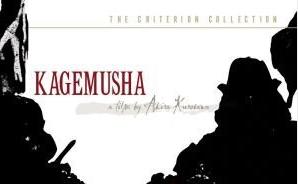
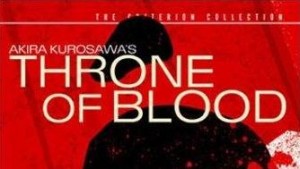
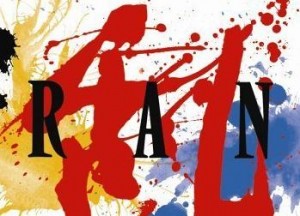
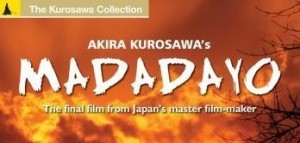
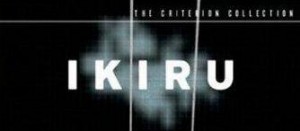
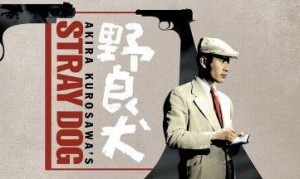
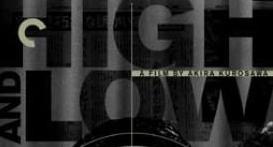
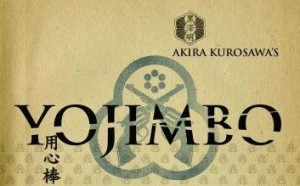
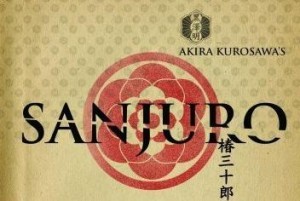
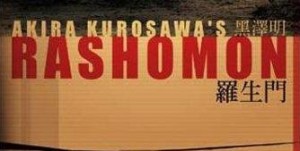
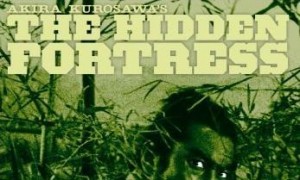
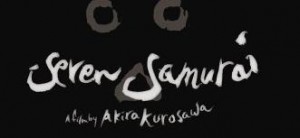

10 Comments
Castor
I have only seen Rashomon and Seven Samurai so far but I loved both movies a lot. Glad you stuck through 12 days of Kurosawa, that’s an impressive feat given the length of some of those films 😉
MarcC
Thanks for the comment Castor and a belated Merry Christmas (or early Happy New Year) to you. I don’t mind telling you it was a little tough trying to get all these in on schedule this close to Christmas but I managed. Still even though I know some Japanese I fell I have to (more importantly want to) watch them again to see, now that I know the story, what I missed after having my eyes glued to subtitles:P
It’ll be all the more fun a second time through but I can’t wait to see next year’s dozen of the 12 I know next to nothing about (e.g. Dreams)
Univarn
I know lots of people who are down on Kagemusha (mostly by relation to Ran), but I think it’s one of Kurosawa’s more overlooked gems. Really glad you got to see all of these films! Kurosawa is one of those directors I think can be elusive to those who don’t understand him. So many of his films are founded firmly in the ideology of imperialistic Japan (such as the separation of rich and poor found in High and Low). Sometimes he embraces it, other times he rejects it.
Oh, and have no fear with Dreams – it’s quite an amazing visual experience 😉
MarcC
Yeah, a fun time indeed but man this was a workout…maybe I should have done the 6 days of Kurosawa:P I learned a lot especially how to appreciate Seven Samurai once I got used to the styles and pacing of Kurosawa. Might give Dream and some others a shot next year before the second installment of our 12 Days of Kurosawa just so I can prep myself and find enough time to give his films a proper write up.
I’d like to get you in on it next time but seeing as you’ve already written stellar reviews and seen everything I’m planning to see, I’ll happily refer everyone to your site:)
Klaus
Nice work Marc! I’m looking forward to re-reading your post as I work my way through each of the films myself. It looks like I have my work cut out for me with Kurosawa’s later films – as they become considerably longer.
MarcC
While I loved over 80% of what I watched, the running time was one thing I found myself struggling with. Especially when I kept to the schedule of 1 a day.
joem18b
Great post.
You mention the grand visuals in Ran, and it’s interesting to me that Kurosawa was legally blind when he made that movie.
You also comment on Kurosawa’s ability to include everyone in a scene, in focus. He used zoom lenses almost exclusively, never wide-angle, so he’d get these great shots where everyone in the scene is stacked up in a flat composition. Pretty cool.
I’m just writing a little review of Red Beard, which marked the great transition in Kurosawa’s career, from the optimism and commercial popularity of his first 26 films to the pessimism and difficult-to-fundedness of his last 7 (or whatever the numbers are – I’m guessing).
One of my nephews runs a Microsoft xbox web site that sells movies in Japan. I asked him today about Kurosawa’s reputation in Japan today. He said that it was similar to that of Hitchcock in the U.S.: everyone knowledgeable knows and loves him, but the modern generation generally won’t watch a black-and-white movie, whereas Kurosawa didn’t take up color until those last 7 films that he made.
MarcC
Oh neat, didn’t know that factoid about Ran; interesting indeed! Thanks for the heads up Joe:)…and welcome to G-S-T!
I suspected he would be a home town legend and your Hitchcock comparison makes sense. What I love about his films is that he changes it up and is very dynamic. Sure his films fall in those 4 main categories (ronin, noir, Shakespeare, art house) but each really is a different animal…also I like that he writes a lot of his films too. *raises Kurosawa admiration meter up 2 more notches*
joem18b
I’ve read an interview that Kurosawa had with Gabriel Marquez in which he says that every movie that he made was different (as you have observed), because he actively evolved throughout his career. Some changes in his work were just bigger than others, as with his abandonment of the heroic figure, change in screen ratio, and adoption of color.
MarcC
I could see how such drastic changes would either make or break a director/filmmaker…especially if he/she’s already got a fan base surrounding one type of film they’ve done. Once someone has a style it’s tough to get out of that comfort zone…but then again that just shows his talents as a filmmaker.